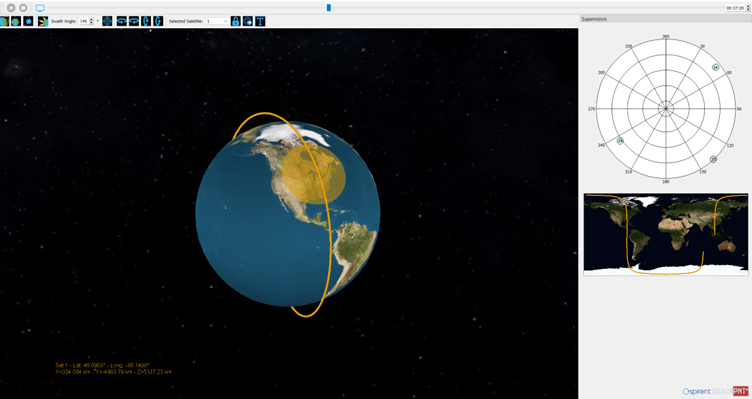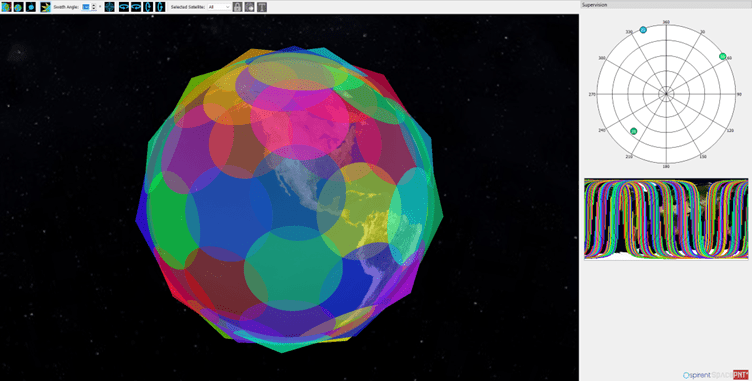

December 15, 2022
Cyril Botteron
Tags: LEO

The two-body problem is guaranteed to show up among the first chapters of any orbital mechanics textbook, and with good reason: its solution leads to the analytic definition of Keplerian orbits, a simple yet extremely powerful tool to predict the trajectory of spacecrafts and celestial bodies alike. In fact, a Keplerian orbit is univocally defined by a set of only six parameters (semi-major axis, eccentricity, inclination, right ascension of the ascending node, argument of periapsis, anomaly at epoch).
Despite the simplicity of the underlying physical model (two bodies of spherical mass distribution, subject exclusively to the mutual gravitational interaction), it is remarkably accurate, and it has enabled countless achievements throughout the centuries, ranging from predicting the appearance of comets to the preliminary design of complex multi-gravitational slingshot trajectories for interplanetary probes.
However, Kepler alone doesn’t tell the whole story. For instance, no celestial body is perfectly spherical, and even in the solitude of space, satellite motion is influenced by a plethora of effects, including gravitational pull from the sun, moon, and other planets, and drag from the uppermost fringes of the atmosphere. Even impacting photons have a measurable effect on the trajectory!
Including all these perturbations in the equations of motion adds significant mathematical complication, to the point where it is no longer possible to find a closed form analytical solution. Finding the best compromise between accuracy and model complexity for a given application is arguably one of the most challenging tasks in astrodynamics.
The simplified perturbations models (and SGP4 in particular) are used extensively by space agencies and industrial actors to predict the path of active and defunct satellites, debris, and space junk, in order to assess the risk of collision and plan avoidance maneuvers accordingly. Each tracked item is represented by a two-line element (TLE). Thousands of TLEs are routinely built and distributed by NORAD and the US Space Command: they include the six classic orbital elements and three additional parameters that are meant to capture the variation of the orbital elements in time. This perturbation model predicts the position of a TLE object with an accuracy better than 1 km for several days around its reference epoch.
The most obvious example is the navigation message broadcast by all GNSS constellations, which includes orbital parameters to predict the trajectory of the transmitting satellites. With the exception of GLONASS, all other constellations transmit Keplerian elements and additional parameters to be used in conjunction with well-defined orbital models to calculate the position and velocity of the transmitter antenna phase center. As an example, the ephemerides contained in the GPS LNAV message allow position prediction within a few meters for two hours around their reference epoch: this is achieved with the inclusion of selected time derivatives and coefficients for harmonic corrections. The values of all these quantities are typically estimated with complex batch processing algorithms and then uplinked to the relevant satellite before their reference epoch.
Designing an orbital propagator for a given application requires a deep understanding of the relative magnitude of all forces acting on the target orbit: for instance, atmospheric drag plays a substantial role at low altitudes, whereas for most practical purposes it vanishes above 2000 km. Similarly, the disturbances caused by the uneven mass distribution on the Earth (non-sphericity, ocean and solid tides) tend to become less prominent when the distance from the Earth increases. On the other hand, the so-called Solar Radiation Pressure would increase if the spacecraft was to move away from the Earth and closer to the sun.
GNSS propagation models are clearly tailored to provide the best performance when applied for their intended orbital category, namely Medium Earth Orbit (MEO) satellites at 20,000 km of altitude and above: unsurprisingly, accurate modeling of atmospheric drag effects falls outside their capabilities.
In Low Earth Orbit (LEO), using a pure Keplerian model (or a specific propagator beyond its expected boundaries) can lead to errors ranging from tens to hundreds of kilometers over just a few orbital periods. This kind of degradation in the modeled orbits is incompatible with the requirements of an accurate simulation environment such as Spirent’s PNT test solutions.
To address this challenge, SpacePNT has developed SimORBIT, a versatile tool that enables the generation of high-fidelity LEO trajectories for single satellites or entire constellations. The initial reference state of the satellite fleet can be defined through an intuitive GUI, or imported from widely adopted formats, such as RINEX (NAV). Its orbital model delivers outstanding performance: the error is ~30 m after 24 hours of propagation (verified against real Precise Orbit Determination data for Sentinel 3A). Additional SimORBIT features include coverage analysis, sky plots from a user-defined reference location on Earth and generation of output files with different formatting options (*.SP3, *.MOT, *.MOTI).

SimORBIT GUI, showing a single satellite orbit and coverage, alongside the sky view and ground track panes

Coverage analysis of a Walker constellation (86.4°: 66/6/2)
SimORBIT integrates seamlessly with Spirent simulation systems. Whether used to generate trajectories for GNSS receivers on LEO satellites, or used in conjunction with capabilities such as the generation of custom navigation signals via I/Q injection and the unique Spirent “Flex” feature, SimORBIT is an important building block in the realistic test infrastructure that is required to develop innovative space-based PNT solutions.
Read SimORBIT datasheet to learn more.